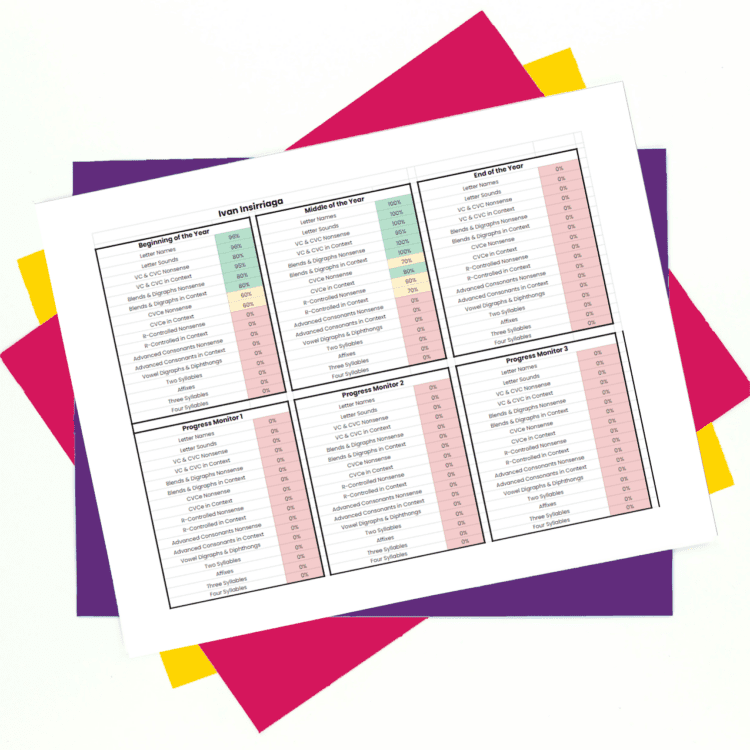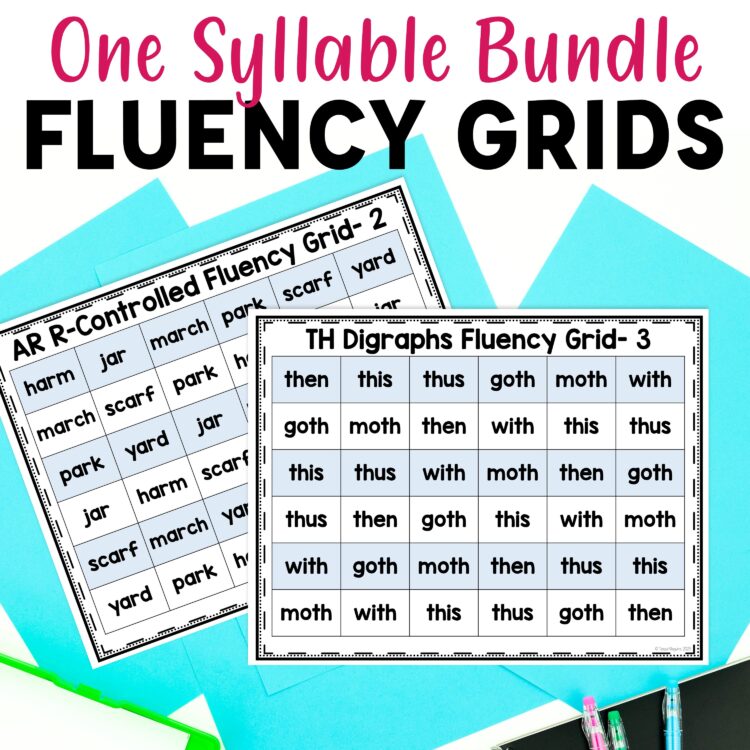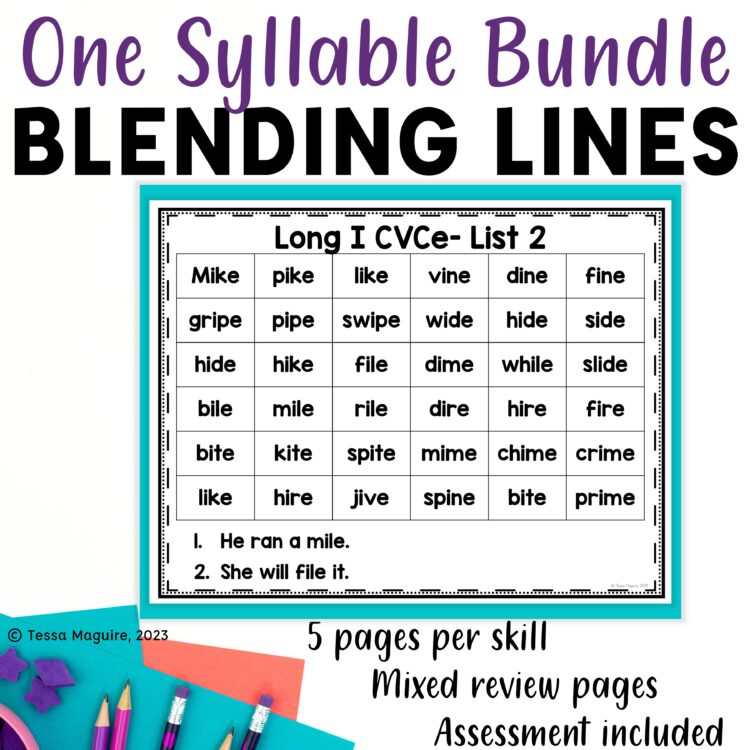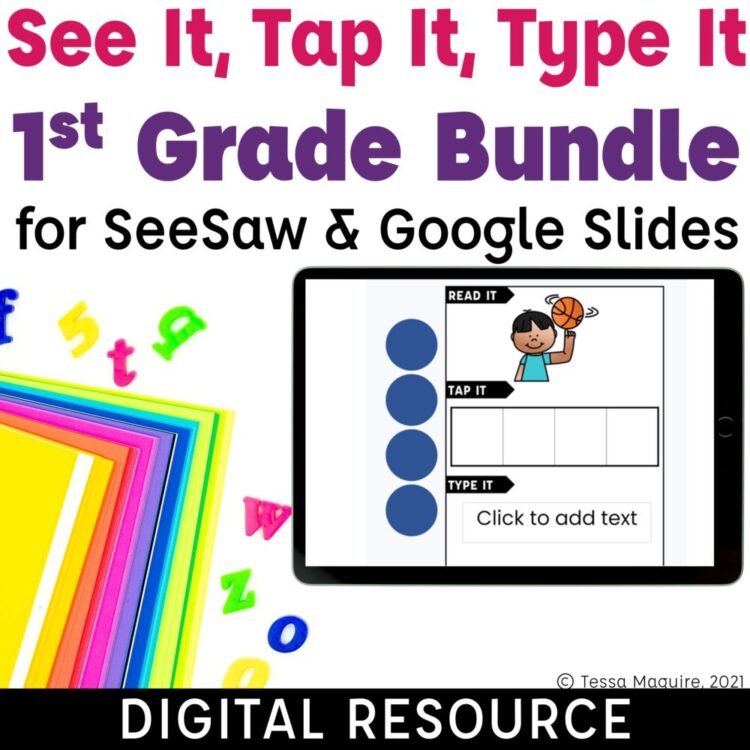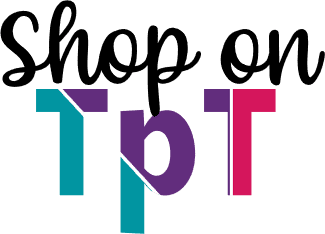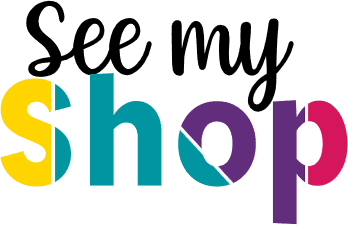© 2024 Tales from Outside the Classroom ● All Rights Reserved
What Does Phonics in 3rd Grade Look Like?
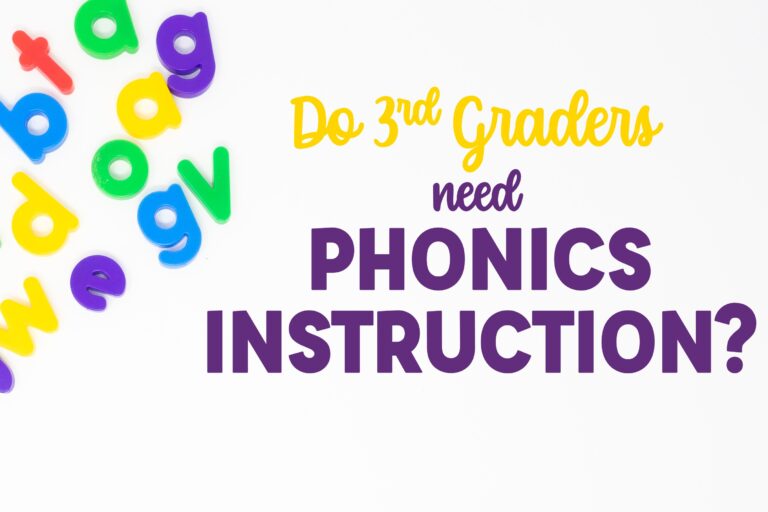
By the time students reach 3rd grade, phonics is no longer a large part of typical classroom instruction. Third grade is the year that instruction shifts to more of a focus on morphology and understanding roots and affixes while incorporating some phonics review. It’s also the year that comprehension and written expression begins to take a larger focus. But there’s still a place for phonics in 3rd grade. Every single year I’ve been a teacher or interventionist, I’ve had a number of 3rd grade students that were below grade-level readers. Some students just need more time. Others didn’t get the systematic and explicit instruction they needed. Right now, because of the effects of the pandemic, the number of students needing explicit phonics instruction is larger than typical. Third grade phonics instruction should be focused on students’ needs. Here’s a look at phonics in 3rd grade.
Do 3rd Graders Need Phonics?
In short, yes! There’s a reason there are so many reading laws for third grade. It’s a pivotal year to close in the phonetic gaps before students move into the intermediate grades. It’s also the year that many seemingly “good readers” start having difficulties. The reality is, they were likely not good readers, but memorized many words that allowed them to read controlled texts pretty well. But, in third grade, we start asking students to interact with more complex text and typically more non-fiction. When that happens, they no longer know many of the words in the text and lack the decoding skills to sound them out. Third graders need instruction on phonics skills they are lacking, and continued support with the multi-syllable words they encounter.
Most students that are struggling readers are struggling with decoding, not comprehension. They need systematic and explicit phonics instruction to increase their decoding skills. Don’t assume that just because a student is in third grade they don’t need phonics. Phonics in 3rd grade is a mix of supporting skills students are struggling with and providing instruction with increasingly complex words.
3rd Grade Level Instruction
By 3rd grade, students should be able to read multisyllabic words and high utility irregular words. They should be able to apply knowledge of the 6 syllable types while reading, though research is still inconsistent in whether or not students need to know the syllable types explicitly. They should receive instruction and practice with decoding and encoding multisyllable words. Third graders should also begin exploring Greek and Latin roots and affixes to read and form new words. Their word work instruction should largely be a mix of phonics and word study. A high-quality core curriculum will provide great vocabulary and word work resources that you can implement. If you’re looking for ways to supplement your instruction, I’d recommend you focus on Greek and Latin roots and affixes. I love to use the weekly root from The Root Repository.
It’s important that all students get exposure and interaction with grade level instruction. All students can participate in morphology work. All students can connect words with the same and similar roots and talk about their meaning. We must ensure students are getting the tools to interact with bigger words, while we also work to close their gaps. Small group instruction is the perfect time to target students’ needs.
Small Group Instruction
Small group instruction is where you’re really able to target students’ phonics needs. Using the data from a diagnostic phonics assessment, identify your students’ phonetic needs. My phonics assessment spreadsheet is a great tool to help you visualize your students’ needs in order to form groups. Once you know what skills your students need, it’s time to make a plan.
Start with a Phonics Assessment
A systematic phonics assessment should be given to every student to identify phonetic deficiencies. Or, a benchmark screener should be used to identify which students need a further, more intentional phonics assessment. This may already be in place by your school or district. If it’s not, it’s not too hard to administer on your own. I do one twice a year- at the beginning and middle of the year to form my small groups. Some people may also choose, or expect, an assessment at the end of the year, as well, in order to show growth. Because that’s not something in place already in my district, I don’t do it with most students.
A note- I’m not a fan of computerized screeners to determine phonetic need. One assessment a former district of mine used did not assess phonics and phonemic awareness for third graders. If your district uses an electronic one, I would err on the side of caution and assess phonics needs for all students just at or below grade level.
I detail free and affordable Diagnostic Phonics Assessments in their own post. There are many out there and each has their own unique sets of strengths and weaknesses. In that post, I also give you a free phonics data tracker. The spreadsheet, built in Google Slides, is preformatted with the QPS (Quick Phonics Screener) but can be edited for any phonics assessment. Just enter your raw scores, and the students’ scores are color-coded to show areas of weaknesses. I like the spreadsheet because I can go column by column to make my list of student names to form my small groups.
No matter which assessment you choose to use, you should ensure it gives you data that matches your instructional scope & sequence, or is similar enough that you can look at your results to know where to begin.
Phonological Awareness Assessments
For many students, the root of their decoding troubles is phonological, or phonemic, awareness. For many students with reading disabilities, it’s a phonological processing deficit that makes learning to read a challenge. I use the information I get from my phonics assessment to determine which students are in need of a phonological awareness assessment. It’s the students that correctly say the sounds in the word but blend it into a different word. It’s the students that struggle to move past the blends level. Students may be struggling with other areas of phonological awareness, but blending and working with words with 4+ sounds is usually the big indicator for me that we need to further assess to find skills to target. I use a phonological awareness assessment to identify student needs. And, honestly, any student scoring lower than CVCe on a phonics assessment is likely in need of phonemic awareness support. For that reason, I typically incorporate phonemic awareness practice within our phonics work.
Making a Plan
Once you know your students’ needs, it’s time to form groups for small group instruction. In third grade, it can be difficult to find time for these groups since it’s typically not the focus of grade level instruction. With that said, it’s important to find the time to support students’ decoding needs because they must increase their decoding skills to be proficient at the standards. It’s worth the time investment, and will pay off in overall student reading achievement.
Small group instruction is always commonplace in my classroom. I modify the focus of my small group instruction to ensure there’s a phonics focus for those students that need it. It does mean that students aren’t always receiving support with comprehension skills in those small groups. It’s a give and take and a sacrifice I make to ensure my students are building their decoding skills. Are you able to utilize a classroom assistant or Title 1 staff? Can you meet with some groups less frequently? These questions may help you think through how you can best find the time to support students’ phonics needs.
Once you have a plan, ensure you’re using high-quality, systematic and explicit phonics materials to ensure appropriate student instruction. Need resources? I list some of my favorite places to find resources in my 6 Top Sites for Phonics Resources to Enhance your Instruction post.
There’s not one way to make everything fit in. If there were, you probably wouldn’t be reading this post looking for ideas! 🙂 It truly is a matter of finding your priorities, thinking creatively, and using the resources you have. Phonics in 3rd grade can be tricky to schedule but it’s worth it!
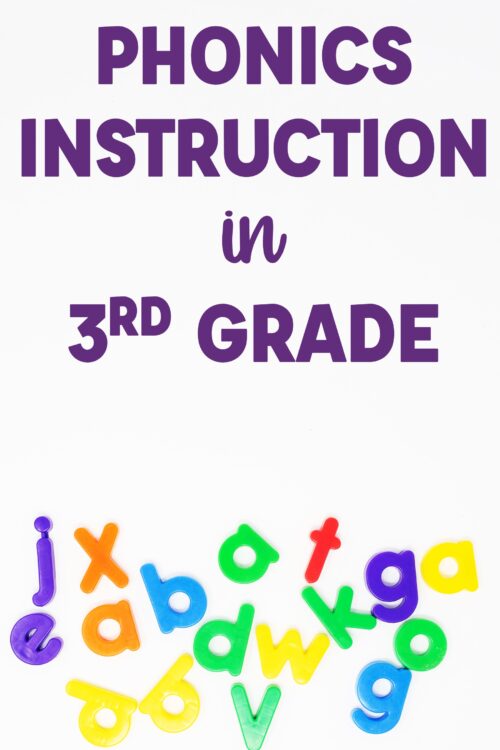
Newsletter Sign Up
Signup for my weekly-ish newsletter. I send out exclusive freebies, tips and strategies for your classroom, and more!
Please Read!
You have successfully joined our subscriber list. Please look in your e-mail and spam folder for Tales from Outside the Classroom. Often, the confirmation email gets overlooked and you're night signed up until you confirm!

Hi! I’m Tessa!
I’ve spent the last 15 years teaching in 1st, 2nd, and 3rd grades, and working beside elementary classrooms as an instructional coach and resource support. I’m passionate about math, literacy, and finding ways to make teachers’ days easier. I share from my experiences both in and out of the elementary classroom. Read more About Me.









